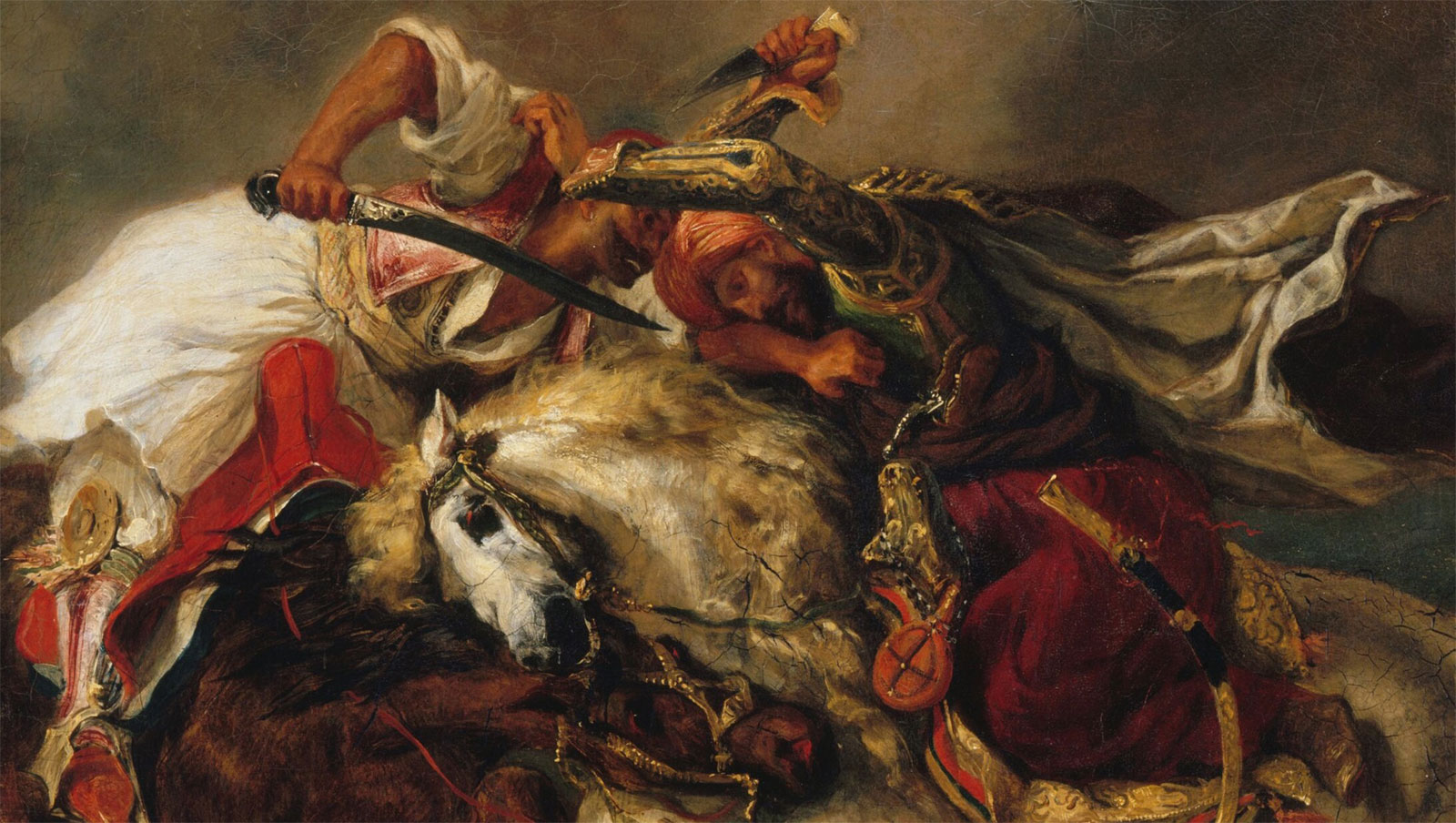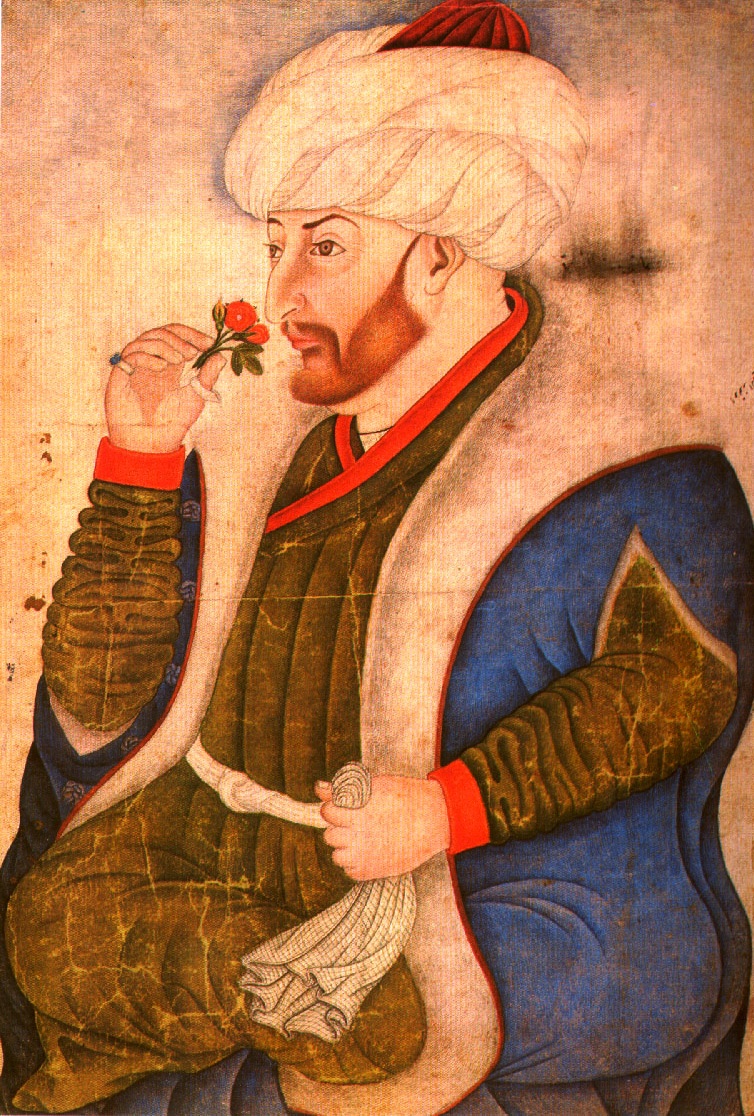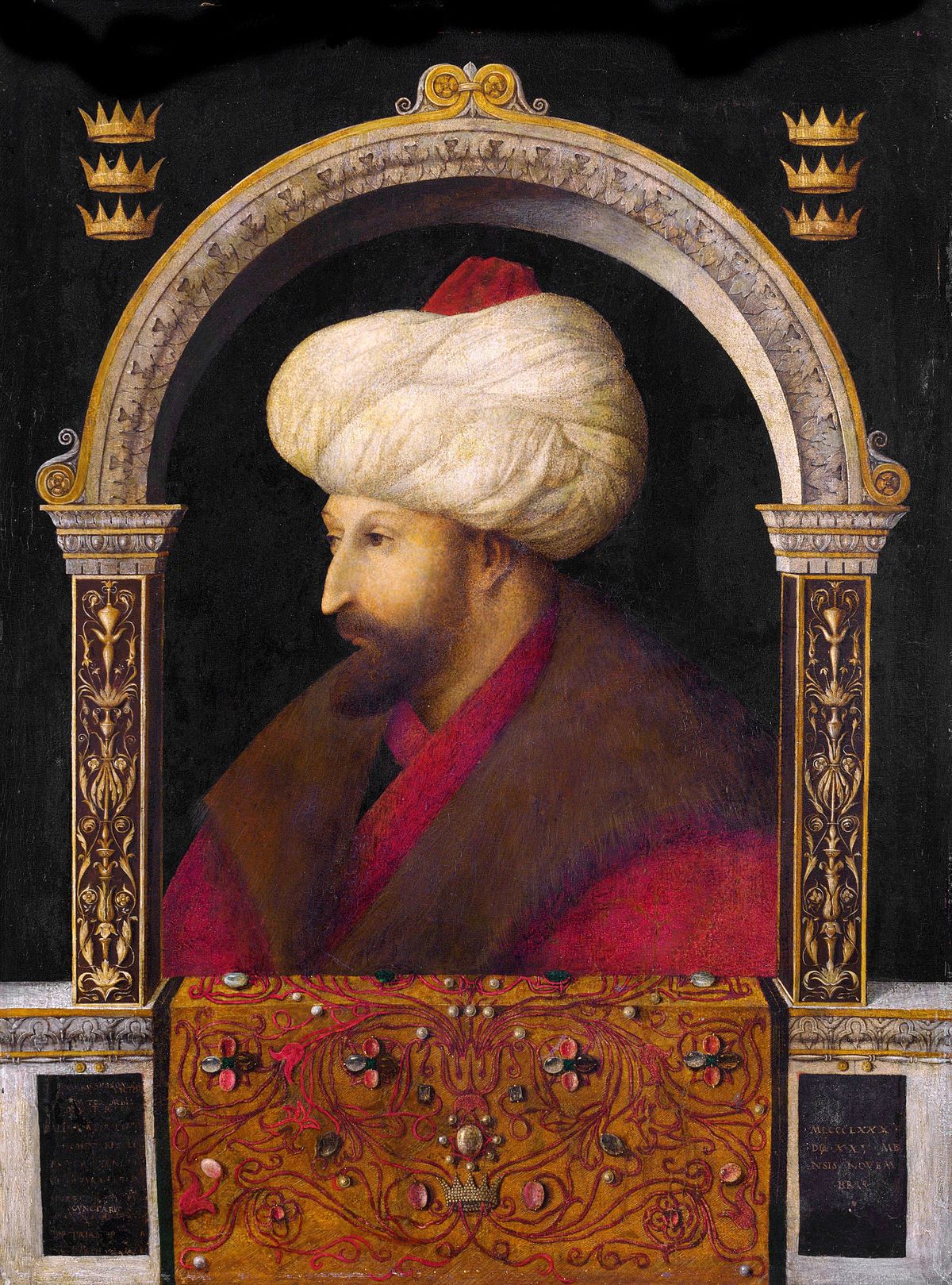 | |
EugŹne Delacroix, Combat of the Giaour and the Pasha, 1835 | |
EugŹne Delacroix (1798–1863) depicted Hassan – "the Pasha" in his scenes from Lord Byron's poem
The Giaour – as an Arab. The artist, raised by an aunt who was married to a former French ambassador to Turkey, may have felt he knew the Turks, but he himself
never visited the country. He traveled instead to Morocco and Algeria, compiling sketches to be used in his Orientalist scenes.
In fact, when Delacroix painted The Giaour's Combat with the Pasha (1835), the French public interest in Turquerie – the fashion since the 16th-century Franco-Ottoman Alliance – was fading rapidly. North Africa was where the French Imperial ambition lay.
The Ottoman Turks, originally from North Central Asia, were products of a vast empire, and after centuries of intermarrying, were indistinguishable from Europeans.
A 15th-century Sultan Mehmed II (the Conqueror), born to an Italian or Serbian mother, had red hair, fair complexion and green to blue eyes.
Between mid-14th and mid-17th centuries, millions of Balkan Christian children were taken in Devsirme ("Blood Tax") to serve the Empire in various capacities –
most notably as the Janissaries: soldiers under direct command of the Sultan. Many of today's Turkish people descend from them.
As magnificent as Delacroix's painting (now at Petit Palais) is, it has subtly influenced the perception of the characters of The Giaour. This perception – that Hassan,
an Ottoman Turk, should be "dark" – is no doubt being bolstered by the current racist narrative that those from Muslim-majority countries are physically different from the
residents of Europe.
We – the producers of the film The Giaour – believe no clear racial lines separate Europe and Asia.
 |

|
Mehmed II (1432-81): from Sarayi Albums, Topkapi Palace Museum, and by Gentile Bellini, 1480 |